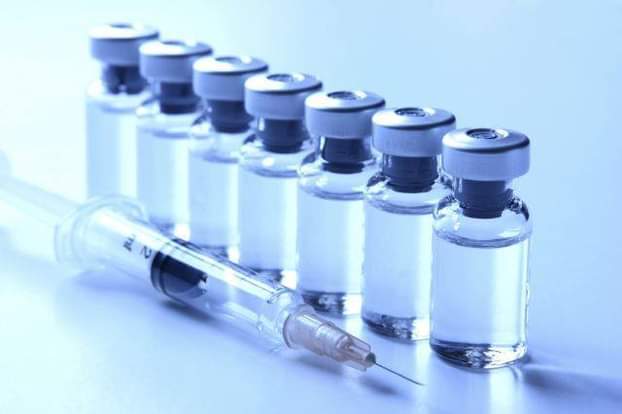
Coronavirus disease 2019 (COVID-19), an infection caused by Severe Acute Respiratory Syndrome Coronavirus 2 (SARS-CoV-2) has taken the world by surprise. One of its most significant properties is its fast-paced nature, one that has been difficult to keep up with. The first case of the disease was reported on the 31st of December, 2019 and almost twelve months later, it has spread to 217 countries affecting over 77 million people and causing almost 1.7 million deaths. Closely related is the development of vaccines to tackle this infection within a span of nine months, a feat that usually takes several years.
It is known to be transmitted primarily by infected respiratory droplets released on coughing, sneezing and speaking, and contact with infected surfaces and objects followed by exposure to the eyes, nose or mouth. Onset of symptoms usually occur 2-14 days after infection and most commonly include fever, dry cough and tiredness. Complications are acute respiratory failure, pneumonia, liver, kidney and cardiac injury, septic shock among others. COVID-19 has exhibited no bias towards any group of people, and all social classes, ages, races and genders have been affected. Due to factors not fully studied (and sometimes attributed to the unfavorable weather or the frequent use of anti-malarial medications), Nigeria and many other African countries have been relatively spared despite scary predictions.
While the infection has not rampaged with similar severity in all parts of the world, there has been almost even indirect impact globally; social, economic and even psychological. Although recently reported as the leading cause of death in the United States, the mortality rate has been comparable to other leading causes of death (e.g. heart diseases, cancer, etc.) in other parts of the world. What necessitated the rapid response by the global health community can be deduced to be the infection’s ability to be transmitted (or easily transmitted), the limited knowledge about the infection, the absence of a cure or effective treatment and the global impact of the infection, for never in this lifetime have we experienced a pandemic of such magnitude. Social distancing and wearing of masks have been employed so far to prevent the spread of the virus with some appreciable success but compliance is waning and there have been second waves of the infection in many parts of the world, including Nigeria.
For these reasons, the world has been presented with the highly controversial next best tool to curb this pandemic: the COVID-19 Vaccine, and like many things about the pandemic, we are still laboring to grapple with it.
Vaccines
A vaccine is a product which triggers the production of immune cells called antibodies by the body. These antibodies fight infection when an individual is exposed to the pathogen the vaccine was created against. A vaccine can be created from a weakened form of the pathogen (live attenuated vaccine e.g. Yellow fever, measles vaccines), an inactivated or killed pathogen (inactivated vaccine e.g. Polio vaccine), parts of the pathogen (subunit, recombinant, polysaccharide and conjugate vaccines), or from toxins produced by the pathogen in non-harmful quantities (toxoid vaccine e.g. tetanus toxoid vaccine). Recently developed types include: viral vector vaccines (e.g. the Ebola vaccine), DNA (Deoxyribonucleic acid) and RNA (Ribonucleic acid) vaccines. Vaccinations were first carried out in 1796 against the small pox disease leading to its successful eradication. Since then, vaccines have been developed against numerous diseases such as polio, measles, mumps, tetanus, meningitis, hepatitis B and more, significantly causing a reduction in their incidence.
How a vaccine is developed
For a vaccine to be developed, it has to go through several phases: Exploratory phase, Pre-clinical phase, then the clinical phases which are divided into phase I, phase II, phase III, and phase IV. The exploratory phase is usually carried out in the laboratory and is a stage where scientists look for what will make up the vaccine e.g. the weakened form of the virus, an inactivated form, etc. like earlier described. In this stage, a candidate vaccine is selected and it frequently takes about 2-4 years. The preclinical stage involves testing of the vaccine in cells and tissues or in animals to find out if the vaccine is safe to use, what dosage is safe and if it can evoke an immune response (immunogenicity) in the body. If a vaccine does not initiate the desired responses, it does not progress beyond this stage which usually lasts about 1-2 years. In summary, the clinical phases involve testing the vaccine in humans who have given informed consent. First, the vaccine is given to a small number of people and is tested for its safety and immunogenicity (phase I), then to a larger group where its efficacy against an artificial infection is assessed (phase II). The third phase involves vaccine testing among hundreds of participants to evaluate how effective the vaccine is against natural infection. If successful, the manufacturer is able to apply for a license. Afterwards, another surveillance is done post-marketing to detect rare adverse effects and also to determine the long term efficacy of the virus (Phase IV). The clinical phases usually span several years.
COVID-19 vaccines
According to the World Health Organization (WHO), the number of COVID-19 vaccines in clinical development currently are 56, and in pre-clinical development are 166. The vaccines are of different types: RNA, DNA, viral vector, protein subunit, inactivated virus, live attenuated virus among others. So far, two of these have gone through the third phase of clinical trials and have been approved for emergency use by several countries. The first is the Pfizer/BioNTech vaccine which has been approved in the United Kingdom, Bahrain, Canada, Saudi Arabia, Mexico, Malaysia, Switzerland, Israel and United States of America. The second is the Moderna vaccine which has so far been approved for use in the United States. Both of these use the messenger RNA technology. Closely following is the Oxford AstraZeneca vaccine which is under review as at the time this article was written.
How the COVID-19 Messenger RNA Vaccines Work
The SARS-CoV-2 contains a protein called the spike protein which enables it to enter human cells. Upon entry, the virus can replicate and cause an infection. Scientists discovered the genetic coding used by the virus to produce this protein and employed the use of molecules called mRNA (messenger Ribonucleic Acid) to carry this information. This mRNA is what makes up the vaccine. The vaccine does not contain either the live form or inactivated form of the virus. When injected into the body, the mRNA instructs cells in the body to make the viral spike protein which are then projected on the cell surfaces. Immune cells within the body detect these proteins as foreign bodies and produce a defensive response. Hence, whenever the patient is exposed to the true virus, this defensive response is initiated to attack the virus and prevent it from attaching to human cells and causing infection. The mRNA should degrade in the cells after producing the foreign protein. mRNA vaccines are only now beginning to be tested in humans.
Pfizer/BioNTech Vaccine
Known to have 95% efficacy from the clinical studies carried out so far, this vaccine is to be given as two doses, 3 weeks apart, intramuscularly. It is to be stored at -80°Cto -60°Cand can only survive in room temperature for up to 6 hours.
It is approved for people 16 years and older.
Moderna Vaccine
Also an mRNA vaccine, the Moderna vaccine has an efficacy of 94.5% from studies done so far. It is given as 2 doses, 28 days apart intramuscularly. It can survive for 6 months at temperatures of -20°C, 30 days in a refrigerator and up to 12 hours at room temperature.
It is approved in the United States for people 18 years and older.
Adverse effects
According to the United States Food and Drug Administration FDA, side effects that have been reported with the Pfizer/BioNTech vaccine and Moderna COVID-19 vaccines include: Injection site reactions (e.g. pain, swelling, etc.)and general side effects like fatigue, headache, muscle pain, joint pain, chills, nausea and vomiting, and fever. These are described as generally mild to moderate and transient, and occur more commonly after the second dose of the vaccines.
There is also the rare possibility of a severe allergic reaction which would usually occur within a few minutes to one hour after getting a dose of the COVID-19 vaccines. So far, four cases of adverse reactions have been reported from the Pfizer/BioNTech vaccine; two in the U.K. and two in Alaska.
Long term effects are still being studied.
The vaccines were rushed
Scientists and the world have shown reservations regarding the speed at which the COVID-19 vaccines were developed. While the time frame of about 10 months is indeed one of the fastest for any vaccine developed so far, some scientists have reassured the world that there were no skipped processes and all the clinical phases were duly carried out. Speaking at a Nigerians in Diaspora Commission (NiDCOM) virtual meeting held recently on COVID-19: Vaccine Hesitancy, Myths and Reality, Dr. Onyema Ogbuagu, a Yale School of Medicine infectious diseases specialist and principal investigator for the Pfizer/BioNTech COVID-19 vaccine trial at the Yale Centre for Clinical Investigation stated that the quick development was as a result of the commitment from all the necessary stakeholders. Other scientists have agreed that risks were taken but were financial, resources and logistical in nature adding that no safety or efficacy risks were taken. What this means is that while clinical phases are usually carried out one after the other in case the vaccine does not progress past early phases, clinical phases were able to be carried out concurrently despite the financial and logistical implications.
The vaccines are however still being studied on a continual basis as all the side-effects and long term effects cannot be concluded on this early.
The vaccines change DNA
Healthy pessimism as to the mechanism of action of the vaccines being rolled out have arisen by some and this is one of them. Do the vaccines have the ability to cause a mutation in the human DNA? Scientistshave explained that the vaccines do not have the ability to do so as they do not integrate with the nucleus of the human cells which contain the DNA. These mRNAs interact with special organelles in the cytoplasm of the human cell called ribosomes which work on the genetic information contained in the mRNA to synthesize proteins.
The vaccines cause infertility
The reason given for this conception is that the SARS-CoV-2 spike protein and a protein necessary for placental development in females called syncytin-1 are the same. Hence, an immune response initiated against the spike protein will cross react to affect the syncytin-1 protein. While there are similar amino acid constituents in both proteins, scientists have disputed the claim saying that the similarities are minute and the body has the ability to differentiate between the two. One scientist is quoted to have said: “The idea that our bodies will recognize Sars-CoV-2 spike protein and cause antibodies to destroy a woman’s placenta is about as realistic as me being unable to differentiate between holding my son’s hand and the foot of a chicken.”
Pregnant women are not to take the vaccines
Clinical studies were not carried out specifically among pregnant women or breastfeeding mothers, hence the use of COVID-19 vaccines for these groups of women has been advised to be avoided in the United Kingdom. Canada and the United States have been more liberal advising women in these groups to consult with their doctors for guidance on how to weigh the risks and benefits of taking the covid-19 vaccines.
The vaccines cause COVID-19
Vaccines made from live forms of a virus have the ability to cause infections, hence this worry by many around the world is justifiable. However, the two vaccines that have been developed so far do not contain the live form of the SARS-CoV-2 but have been described to contain mRNA which causes the body to produce antibodies against a protein located on the surface of the viral cell. Scientists have explained that this removes the possibility of a COVID-19 infection occurring when the vaccine is administered to an individual.
Those who have been infected do not need the vaccines
According to researchers, the body has the ability to develop antibodies against SARS-CoV-2 when a person is infected. However, it has been shown that reinfection can occur and the duration of innate immunity is unknown. For this reason, persons who have been infected before are still advised to receive the vaccine 90 days post-infection to reduce the risk of reinfection. A duration of 90 days is advised because evidence has shown that reinfection during this time frame is rare. However, more research still needs to be done.
COVID-19 is a conspiracy theory
At the onset of the COVID-19 pandemic, legitimate concerns about its origin and true existence arose. While theories that the virus did not truly exist were rampant in some parts of the world including Nigeria, for ‘no one knew anyone who knew anyone who had been infected’, there were also beliefs that the virus was leaked from laboratories in China, might have been created by Bill Gates, the co-founder of Microsoft Corporation, or was being spread by the 5G wireless technology. Since then, it has been reported that the genetic sequencing of the viruses being worked on in the Chinese labs are different from that of the SARS-CoV-2 and that the 5G electromagnetic waves cannot transmit a virus. The US Centre for Disease Control and Prevention (CDC) has also reported that the virus was likely to have been spread from animals to humans through a large seafood and live animal market in Wuhan, China.
The COVID-19 vaccines signify the mark of the beast
For some Christians around the world, the COVID-19 vaccines are believed to be the ‘666’ mark of the anti-Christ. This is especially because of the implied restrictions for persons who will not receive the vaccines in the nearest future. While some are for this claim, others are against it stating that according to the Bible, accepting the mark cannot be done accidentally and involves the deliberate denouncement of Christ which is not a pre-requisite for receiving the vaccine.
The vaccine is a microchip for the government to track you
A video was shared on social media implying that a tracking microchip will be injected into persons who will receive the COVID-19 vaccines. Earlier this month, Reuters labelled this claim as false stating that several interviews which had been conducted in the past with Jay Walker (executive chairman of pre-filled syringe maker, Apiject which is involved in the production of injectors for the COVID-19 Vaccines), Bill and Melinda Gates, and Jack Ma (co-founder and former executive chairman of Alibaba Group) among others were altered to create the video.
According to Jay Walker, the microchip can be compared to a ‘bar code’ and does not gather personal information. When contacted about the issue of microchips as it relates to this claim, a spokesman of Apiject confirmed that the microchip will not be injected into people. He explained that the microchips were designed for vaccine providers to confirm the authenticity and viability of the vaccine as well as to determine if a vaccine has been used. He mentioned that the technology is still optional and has so far not been requested.
The vaccines will completely stop the pandemic
While the vaccines are projected to protect against mild to severe forms of the COVID-19 disease, and to even prevent infection on exposure to the virus, the vaccines do not have 100% efficacy and are not likely to completely stop the pandemic. Experts also say that the duration of immunity provided by these vaccines are still unknown. It may be too early to conclude that these vaccines will completely stop the pandemic. However, they acknowledge that it is one step forward towards ending the ravaging infection.
The vaccine is not suitable for children
According to the researchers involved in the development of the COVID-19 vaccines, clinical trials were not carried out among children for safety reasons. The Pfizer/BioNTech vaccine is only suitable for persons 16 years and older, while the Moderna vaccine is suitable for persons 18 years and older. Although, children are not to receive the COVID-19 vaccines developed so far, efforts are being made by the scientific world to see how clinical studies can be carried out to assess for vaccine safety and efficacy in this age group.
Conclusion
Earlier predicted to be developed and ready for use in 2021, the COVID-19 vaccines have set a record by taking only about 10 months to scale through the phases of clinical trials and are currently approved for emergency use in a few countries. The world responds with mixed feelings of relief, optimism, fear, curiosity and antagonism. Nigeria is set to receive the first set of vaccines in January, 2021. Lest we be burdened with the concerns and doomsayings that throw us into despair, let us carefully examine the facts laid before us, choose whose report to believe and hope against all hope that the curtains will fall on the COVID-19 pandemic.
▪Ade-Adeleye is of the College of Medicine, University of Lagos.












